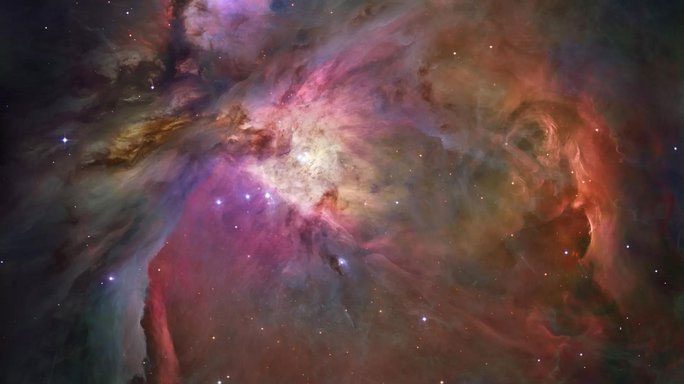Scientists have announced a significant breakthrough in discovering the origins of the “building blocks of life”, where billions of years ago, asteroids gathered materials to seed life on our planet.
The theory that Earth’s life has extraterrestrial origins has long been present and is increasingly gaining acceptance following substantial supporting evidence. However, a major mystery remains: What was the original “factory” that produced the “seeds of life” and where was it located?
A new study led by Dr. Danna Qasim from the Southwest Research Institute (SwRI – USA) and Dr. Christopher Materese from NASA’s Goddard Space Flight Center claims to have identified that location through experiments in simulated interstellar space environments.

The Luhar Nebula contains a region of gas and dust similar to the “void world” that birthed the Solar System – (Photo: NASA/ESA)
Previous studies focused on simulating the formation of amino acids in carbonaceous chondrite meteorites (CC), a group of meteorites believed to carry life’s materials to planets, including our Earth, and represent the matter of the early Solar System.
This new research even looks further back in time, exploring the clouds of gas and dust in interstellar space, where the Sun and subsequently the planets formed.
“The composition of asteroids originates from the ‘parent’ molecular clouds, which are rich in organic material” – stated Dr. Qasim.
While no direct evidence of amino acids was found, the team discovered organic compounds that are precursors to amines. This suggests that life’s materials were conceived right from the “void world”, which consists of nearly invisible clouds, composed only of gas and sparse dust, wandering between stars.
To simulate the origins of life, scientists used various types of ammonia ice, CO2, methanol, and water ice, which had previously been identified in interstellar clouds, and bombarded them with high-energy protons to replicate the exposure of ice to cosmic radiation.
The outcome of the experiment was the breakdown of ice molecules that self-assembled into more complex organic molecules, including amines and amino acids such as ethylamine and glycine.
This precursor material for life was supplied to wandering asteroids. Such materials eventually seeded planets like Earth during its formative stages, providing the initial seeds for the chemical reactions that would ultimately lead to the emergence of life.


















































